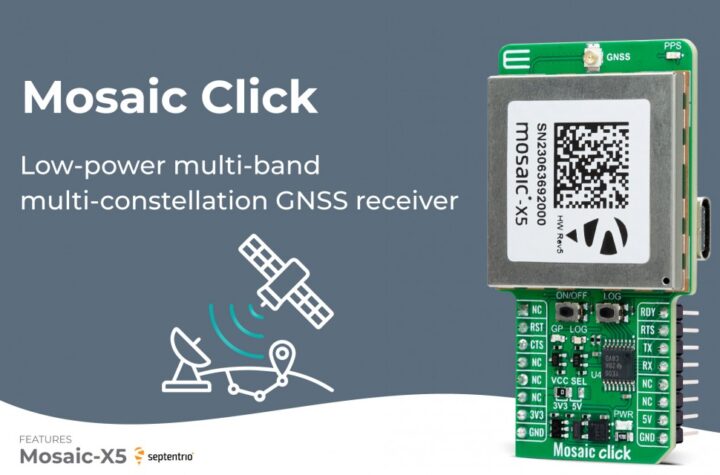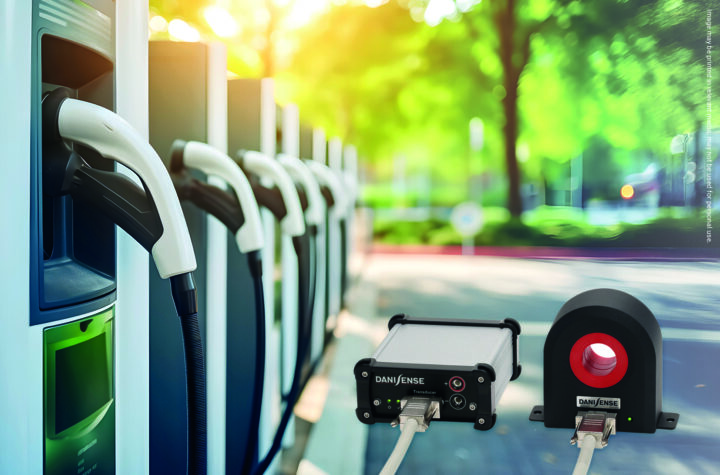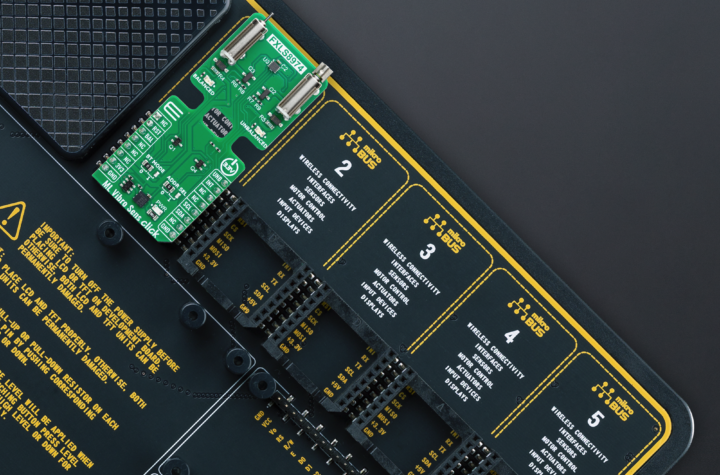
The demanding nature of the automotive industry, coupled with constantly changing standards and introduction of new consumer-based applications into the vehicle, makes designing electronics for the automotive market an extremely complex and dynamic undertaking.
Here, system cost, flexibility, reliability, scalability, and time-to-market remain key considerations. With analysts forecasting the worldwide semiconductor market for in-car audio, infotainment and driver information/telematics to grow from 5.6 billion USD in 2003 to 12.8 billion in 2010, meeting the needs of the automotive electronics market – without having to make tradeoffs between these considerations – will be imperative.
As the world’s leading provider of programmable solutions and the market leader in programmable solutions for the automotive market, Xilinx, Inc. is well suited to address the complex demands of the automotive industry. A 1.7 billion USD company, Xilinx designs and produces highly complex semiconductor chips capable of being programmed individually for use in a wide range of electronic systems. It also develops the software design tools necessary to program these chips and predefined system functions which customers load as intellectual property (IP) into Xilinx logic devices. The Xilinx product portfolio includes a wide breadth of both Field Programmable Gate Arrays (FPGAs) and other Complex Programmable Logic Devices (CPLDs).
With its Xilinx Automotive (XA) PLD solutions, high-performance LogiCORETM IP, proven expertise and leadership in the automotive market, and a host of design services and support, Xilinx uniquely provides designers the competitive advantage they need to stay ahead of the automotive electronics curve. It is the first and only vendor to offer a complete programmable Media-Oriented System Transport (MOST®) FPGA solution. Xilinx’s ‘complete solution’ approach to the design of automotive electronics comprises XA FPGAs, IP, middleware, software, tools, and development hardware.
No other PLD supplier to date has met all required industry quality standards, including ISO 9001, ISO 14001, ISO-TS16949 and a full automotive product line qualified to AEC-Q100 requirements. Certification to the ISO-TS16949 standard is a key requirement for automotive customers worldwide. In keeping with the growing wave of environmental regulations, or green initiatives, Xilinx lead-free packages are RoHS-compliant.
The Xilinx MOST Solution
Today, the automotive electronics market continues to grow on many different levels. In particular, the primary market for FPGAs and CPLDs is comprised of the following application segments:
• Infotainment (e.g., telematics, GPS navigation, multimedia systems, audio systems, rear-seat entertainment, DVD players, game consoles, integrated mobile phones, and digital radio and display systems)
• Driver assistance (e.g., night vision, lane departure warning, park/reverse assist, adaptive cruise control, and collision warning)
• Comfort and convenience (e.g., heads up displays, hybrid instrument clusters and voice recognition)
• Networking (e.g., gateway systems which allow all of the different in-vehicle networks to communicate with each other and share information)
While Xilinx PLDs play a role in all of these application segments, the in-vehicle entertainment network is one area where the company is expected to have a significant and defining industry impact. Within the European luxury vehicle market, the MOST multimedia bus has become the defacto standard. Outside this segment, adoption of MOST has been stifled by a limited supply base, slow technology evolution, and cost. In fact, there has long remained a sole supplier of MOST controller devices. While changes are coming that will address concerns regarding cost and network speed, they do nothing to address the issue of truly open standards and choice. Additional suppliers and more flexible solutions are needed to invigorate this market.
With its complete programmable MOST solution, Xilinx is taking on the challenge of helping to drive global adoption of MOST. This uniquely flexible solution on an FPGA provides many advantages beyond the standard product solution currently available.
The Xilinx MOST solution, developed in conjunction with its partner, Gothenburg, Sweden-based Mocean Laboratories AB, will include Xilinx XA FPGA devices, LogiCORETM MOST controller IP and Mocean’s Network Services middleware layer. Mocean, a long time collaborator with major OEMs on MOST and the world leader in MOST soft IP, is also providing additional components of this solution including data routing and Digital Rights Management (DRM).
As opposed to providing just a network interface to the MOST standard, the Xilinx solution allows network interfacing, processing, switching and routing, etc. – all on a single chip. As a result, manufacturers can enjoy flexible system partitioning alternatives for infotainment applications which better meet their needs, rather then being forced to make an architectural decision based on the capabilities of the hardware available. No longer are compromises in – and between – flexibility, scalability, time-to-market, and system cost required.
The Xilinx MOST solution is expected to accelerate the integration of consumer/home electronics into vehicles. As MOST adoption increases, these infotainment systems will migrate from the Luxury vehicle segment, where it is today, to the Premium and Midline segments as well. Since the MOST network allows for easier plug-and-play communications amongst infotainment modules, OEMs can offer consumers more options when buying a vehicle.
The Xilinx MOST controller will also help speed the evolution of the MOST standard by allowing for development and testing on a programmable platform that can be brought directly into a production environment. It is designed to give the user full access to all available ports, including synchronous, asynchronous and control. Using the high bandwidth and processing capability of the FPGA, designers can custom build functions or use pre-designed IP to operate directly on streaming synchronous data. This might include, for example, carrying out DRM using the Digital Transmission Content Protection (DTCP) IP core available from Mocean. Audio and video pre- and post- processing can also be carried out on streaming data in real time.
The true advantages of Xilinx’s complete automotive solutions lie in the flexibility and integration offered by FPGA technology. The key benefits of using PLDs for automotive applications include economies of scale, low-inventory risk through end-of-line programmability, easier design re-work, faster time-to-market, field re-programmability, and lower upfront non-recurring engineering charges. Additionally, PLDs allow for customer-specific product derivatives from a single scalable platform design.
A Closer Look
The Xilinx Automotive (XA) product family is the industry’s leading programmable logic family specifically designed to meet the strict requirements set by the automotive industry. These cost-effective devices are offered in both extended temperature (-40°C to +125°C) and industrial (-40°C to +85°C) temperature ranges. The density – ranging from 32 macrocells to 33,000 logic cells – and package offerings have been carefully selected to meet these temperature conditions while recognizing the need for high-performance, cost-effective and flexible solutions.
When the XA product family was launched in 2004, it was the only programmable logic line to meet the Automotive Electronics Council AEC-Q100 qualification standard. It is fully supported with the automotive industry’s required Production Part Approval Process (PPAP) documentation.
While FPGAs open up a whole new way of developing automotive electronics systems, IP is made available to ensure designs more quickly. Xilinx broad range of high-performance, automotive IP cores are optimized for XA devices through partner and LogiCORETM IP solutions. When used in conjunction with XA devices, the resulting hardware/software solution provides an effective answer to the design challenges of today’s automotive market.
Driving Change
As the market leader in programmable solutions for the automotive electronics market, Xilinx continues to evolve its offerings to accommodate the dynamic and constantly-changing needs of the industry. Today, Xilinx offers the most comprehensive set of certified options for automotive designers, providing them maximum flexibility in balancing price, performance and functionality. It will soon offer the first complete, flexible, higher-level integrated solution for MOST. Xilinx existing automotive PLDs (e.g., the Spartan Series of low-cost FPGAs) and the glue logic, 9500XL and CoolRunner-II families of devices, are currently being used in a range of automotive products including GPS navigation systems, driver information systems, rear-seat entertainment systems, driver assistance systems and more.
Questions and Answers
The Xilinx Corporate headquarters is located in San Jose, California. Xilinx also has regional headquarters in Dublin, Ireland; Singapore; and Tokyo, Japan.
Automotive Industries recently spoke to Harvey Steele, Director of Automotive Product Line at Xilinx, about the future of automotive electronics.
QI: Given the traditional use of PLDs, why are they now considered a viable option for the automotive market?
A1: In automotive, PLDs have traditionally been used for concept development and prototyping. The migration to smaller device geometries has changed the economics enabling PLDs to be considered a viable option for high-volume automotive production applications. In fact, PLDs have become especially well suited for this market due to the high adoption rate of new and emerging consumer functionality into the vehicle. This requires a flexible architecture, which by its very nature is available with a PLD.
Q2: What percentage of Xilinx revenue comes from the automotive sector and how much is that revenue expected to grow over the next couple of years?
A2: The automotive XA program was announced just two years ago. Today it is a small, but rapidly growing, percentage of Xilinx total revenue. However, automotive is viewed as a very important market segment for Xilinx and as such, we have brought in automotive industry veterans to lead this effort. We currently have over 30 percent growth annually. Thanks to the explosion of infotainment, driver assistance, comfort and convenience and in-vehicle networking applications, that revenue is forecasted to continue its move forward.
Q3: How will the launch of MOST in-vehicle multimedia networking IP, later this year, impact Xilinx?
A3: The MOST solution that Xilinx will offer is significant not only to Xilinx, but to the automotive market in general. Very few semiconductor players have introduced MOST hardware to date. Of those players, Xilinx will be the only PLD manufacturer to offer its customers a full solution. With such limited hardware, middleware and software choices to implement MOST in-vehicle, customers have been forced to make decisions based on what was available, as opposed to on what they really wanted to do. Not only is the FPGA re-programmable, but the Xilinx MOST IP and middleware solution is scalable; thereby allowing customers to consider new system partitioning alternatives which, in many cases, will be able to better meet their needs. With the availability of the Xilinx LogiCORETM controller, customers will be able to increase integration and reduce overall system costs by choosing to eliminate a separate transceiver chip. Consequently, with a simple physical layer, an FPGA can communicate directly with the MOST bus.
Q4: Will Xilinx need to adapt its products in order to use the MOST multimedia network protocol? If so, please explain how?
A4: No, the XA line of physical hardware will not change. However, since the Xilinx MOST offering highlights our “system solutions†approach to automotive applications we want to provide not only the hardware (e.g. the physical FPGA in this case), but also the IP, middleware and development systems necessary for customers to quickly and effectively implement designs. As a result, we have worked diligently with Mocean on the Xilinx MOST solution. Mocean brings a wealth of middleware and IP to the table which compliments our MOST LogiCORETM IP development. Mocean’s expertise and dedication have been instrumental in helping us bring our full MOST solution to fruition, and the company will continue to be an important multimedia partner for us beyond this initial MOST development. In addition, we have partnered with San Jose, CA-based IDT who will provide a custom MOST PLL/clock recovery chip.
Q5: Can you describe some of the changes you expect in automotive electronics as a result of the Xilinx MOST solution launch?
A5: We expect to see a further pick-up by tier one customers in the usage of Xilinx FPGAs; especially in the infotainment space. We believe that by offering a full MOST solution, customers will see our strong commitment to bringing a flexible and programmable alternative to functions critical to the automotive market. We believe that the addition of the MOST solution to our broad portfolio of IP and software, coupled with the fact that we have automotive qualified silicon, will afford our customers a number of benefits, including the ability to integrate more of their architecture onto the FPGA, scale as needed for their application or platform, and get to the market with the speed necessary to be competitive.
Q6: Will your current automotive market strategy change because of MOST and if so, how?
A6: No. The Xilinx automotive strategy is not based on a single function or network. We will build full system solutions for the automotive market wherever the flexibility of our programmable hardware can add value. With MOST, we are just scratching the surface. While we certainly plan to expand our XA silicon product line moving forward, we will also continue to focus on the IP and software required to optimize ease of use and give system designers flexibility in architecting these increasingly complex automotive systems. Yes MOST is an important part of our strategy, but in general, Xilinx solution focus will continue to evolve with the needs of our customers, as well as that of the automotive electronics market.
Q7: What are some of the challenges facing a company like Xilinx, in terms of designing products for the automotive segment? For example, are there any new infotainment applications car makers wish to add in vehicles?
A7: Xilinx is constantly looking ahead at the needs and future ‘wants’ of our automotive customers. By doing so we can ensure that we have the right mix of hardware, IP and software ready to meet any market demand. Xilinx has always been a leader and innovator in the PLD market. Now, we are working to leverage that leadership position and culture of innovation for use in the automotive market. That goal entails making sure that we keep our eyes on emerging and future technology. Infotainment, for example, is seeing many changes as consumer protocols find their way into vehicles. Driver assistance is also growing rapidly, with camera-based applications for lane departure warning, back-up assist and others now starting to hit mainstream vehicles. We are investing heavily in the consumer and audio-video broadcast vertical market segments, as well as in our embedded processing and DSP technologies. We expect to see much of this cutting-edge technology making its way into vehicles in the next few years. By leveraging the knowledge base in these groups and talking with customers, we can more clearly determine what other market segments and technologies we should be focusing on for the automotive market. As a result, we can stay ahead of the curve and, when the market is ready, be better prepared to implement a new technology into the vehicle with the appropriate system solution.
Q9: Can you venture to predict any technological breakthroughs which may occur in automotive electronics in the next few years?
A9: Camera-based driver awareness applications will continue to grow. Also, programmable silicon will enable smart cameras to better adapt to challenging viewing conditions in much the same manner as the human eye. This capability will allow an unprecedented level of awareness by the vehicle of its surroundings. It is sure to inspire a host of advanced vehicle functions to keep drivers more ‘aware’ and allow them to better deal with threats. The ability of vehicles to better communicate with each other will further increase both vehicle and driver awareness of surroundings. Along with this breakthrough though, comes the challenge of dealing with even larger quantities of data which must be processed extremely fast. This, in turn, will mandate the use of faster processors and/or parallel logic, such as ASICs or FPGAs.
MOST is a registered trademark of OASIS SiliconSystems and licensed to Xilinx.














More Stories
Mosaic Click board from MIKROE delivers global coverage multi-band and multi-constellation tracking ability
Current transducer from Danisense selected for DC charging station testing device demonstrator at TU Graz
New Click board from MIKROE helps develop and train ML models for vibration analysis